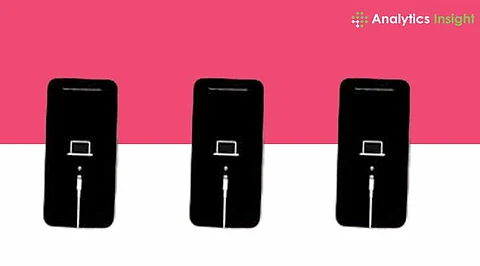

Getting your iPhone stuck in Recovery Mode can be frustrating and disruptive. Whether it's due to a software glitch, a botched update, or another issue, being unable to use your phone can be stressful. Fortunately, there are safe and effective ways to rescue your iPhone from Recovery Mode without risking your precious data. In this tutorial, we'll walk you through proven solutions, including Force Restarting, updating via Finder or iTunes, and using specialized tools like Tenorshare ReiBoot, to get your iPhone back to normal and prevent future occurrences.
1. Multiple restarts or Apple logo freezing can trigger Recovery Mode because of software glitches.
2. Although rare, hardware issues can trigger Recovery Mode, too.
3. A dead battery may interrupt updates, prompting Recovery Mode.
4. Unsuccessful iOS updates may require reinstallation via Recovery Mode.
Here are a few simple methods that can be used to resolve the glitch:
1. For iPhone 8 and later (Face ID models), press and release the Volume Up button quickly, then the Volume Down button. Press and hold the Side button until the Apple logo appears.
2. For iPhone 7 series, simultaneously press and hold the Volume Down and Sleep/Wake buttons until the Apple logo appears.
3. For iPhone 6s, iPhone SE (1st gen), and older models, simultaneously press and hold the Home and Sleep/Wake buttons and release when the Apple logo appears.
If force restart fails, connect the device to a computer connected to the internet.
1. Windows 10 users: Get the Apple Devices app from Microsoft Store.
2. macOS users: Install current macOS.
3. Connect an iPhone to a computer with a supported USB cable.
4. Open Finder (Mac) or Apple Devices app (Windows).
5. Trust the device if prompted.
6. Choose the Update option.
7. Software checks the current version of iOS and requests installation.
To solve the issue, first download and install the Tenorshare ReiBoot program on Windows or Mac system. Then, connect your iPhone to your computer using a USB cable. After that, launch the app and select the "Exit Recovery Mode" option.
1. The iPhone should be connected to a computer through a USB cable.
2. Tenorshare ReiBoot must be launched to inspect if the device is being recognized in Recovery Mode.
3. If recognized, Start Repair must be clicked.
4. Standard Repair must be selected and initiated.
5. Upon receiving the "Firmware version is ready for download" message, the Download button should be clicked.
6. Once the firmware package is downloaded, Start Standard Repair should be selected.
If the previous methods do not work, seek help from an Apple Store or an Authorized Service Center.
1. Keep the iOS updated.
2. Do not stop updates.
3. Install beta versions only when absolutely required.
4. Do not disconnect during restore.
5. Keep the device charged while updating.
6. Fix hardware problems at an early stage.
To resolve issues with an iPhone that is stuck in Recovery Mode, consider the following solutions. While Force Restarting your iPhone and using Finder or iTunes can help restore your device, Tenorshare ReiBoot is a reliable alternative if those methods are ineffective. With features like Exit Recovery Mode and Standard Repair, ReiBoot provides quick, data-safe recovery options.
To prevent similar issues from occurring in the future, ensure that software updates are executed normally, minimize interruptions during the update process, and address any hardware problems promptly. If problems persist, seeking professional assistance from Apple Support is still the best option.
